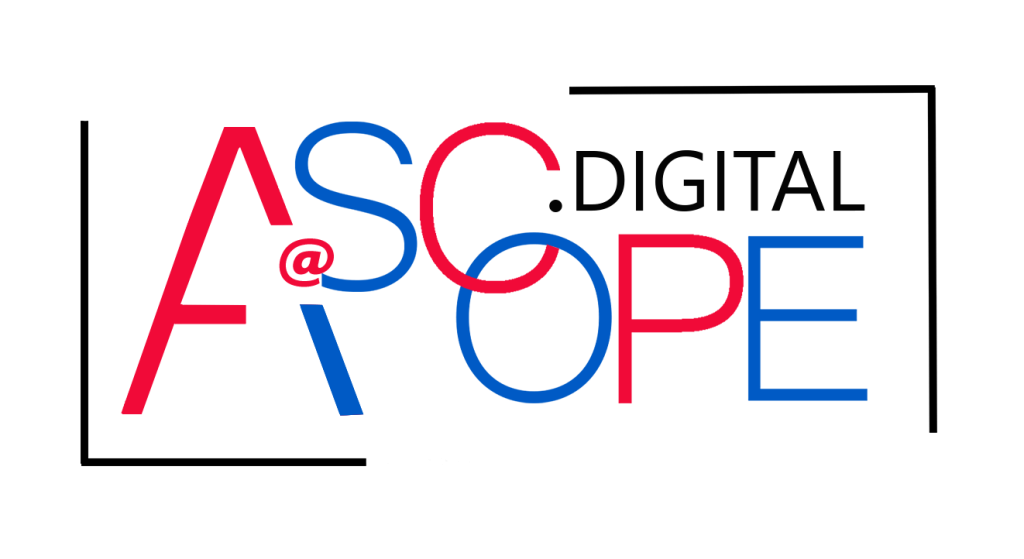
In the ever-evolving world of SEO, understanding and implementing search intent optimization is crucial for achieving long-term success. Search intent refers to the underlying purpose behind a user’s query, whether they’re seeking information, a specific website, or looking to make a purchase. Aligning your content with the user’s search intent is essential for improving website visibility, engagement, and search engine rankings. In this article, we will explore the significance of search intent and its impact on SEO, while highlighting strategies to optimize content effectively.
Understanding Search Intent: The Foundation of SEO Success

Search intent optimization is the cornerstone of successful SEO strategies, as it ensures that the content you create aligns perfectly with what users are actually looking for. In simple terms, search intent refers to the underlying purpose behind a user’s search query. Whether users are seeking information, a specific website, or looking to make a purchase, their intent shapes how they phrase their queries. Understanding this intent is crucial for tailoring your content to meet their needs and improving your website’s visibility in search engine results.
There are three primary types of search intent that every SEO professional should consider when optimizing content: informational, navigational, and transactional. Each type represents a different phase in the user journey, and understanding these nuances is essential for effective search intent optimization.
- Informational Intent: Users with informational intent are looking for knowledge or answers to specific questions. They may type queries like “how to optimize search intent” or “what is search intent optimization.” These searches are not aimed at making a purchase but rather at learning something. For content optimization, you should focus on providing valuable, well-researched, and detailed information, often in the form of blog posts, how-to guides, or FAQs. By creating high-quality content that directly answers user queries, you can boost your site’s relevance and ranking for informational searches.
- Navigational Intent: In this case, users are looking for a specific website or web page. Queries might include the name of a brand or product, such as “AI Scope Digital website” or “Google Search Console login.” When users exhibit navigational intent, they are already familiar with the brand or service. For SEO success, ensuring your website is easily accessible and well-structured is key to capturing these searches.
- Transactional Intent: Users with transactional intent are looking to make a purchase or complete an action, such as signing up for a service. Queries like “buy SEO services” or “best tools for search intent optimization” are common. To optimize for transactional intent, your content should focus on product pages, clear calls-to-action, and engaging offers. Using keywords related to product features, pricing, and benefits helps drive conversions from users with high purchase intent.
By effectively identifying and understanding these different types of search intent, you can implement search intent optimization strategies that guide users seamlessly to the information, product, or service they’re seeking. This alignment between user needs and content offerings is what drives higher search engine rankings and better user engagement, making search intent optimization a critical element of any SEO strategy.
Identifying User Intent Through Keyword Research and Analytics

Effective search intent optimization begins with identifying and understanding the intent behind user queries. By analyzing search queries through various tools and methods, businesses can refine their SEO strategies and create content that aligns with user needs. Keyword research and analytics tools play a crucial role in this process, enabling marketers to decode search behavior and adjust their strategies accordingly.
The first step in identifying search intent is conducting thorough keyword research. Tools like Google Keyword Planner, Ahrefs, and SEMrush allow you to discover the terms users are searching for in relation to your products or services. By analyzing the search volume, competition, and relevance of these keywords, you can identify the underlying intent behind the queries. For example, users searching for “best SEO tools” likely have transactional intent, looking to purchase or compare tools, whereas “how to improve SEO ranking” indicates informational intent, as users seek knowledge.
Another invaluable tool for search intent optimization is Google Analytics. By examining metrics such as organic search traffic, bounce rate, and average session duration, you can gain insights into how well your content is meeting user expectations. A high bounce rate for a specific keyword could suggest that the content isn’t aligned with user intent, prompting you to adjust it. Additionally, by analyzing user flow and behavior on your site, you can identify patterns and better understand which content resonates with users and aligns with their search intent.
Google Search Console is another essential tool for identifying search intent. It allows you to analyze the performance of specific queries in the search results. By reviewing the Click-Through Rate (CTR) for various keywords, you can determine whether your content is attracting the right audience. If certain keywords aren’t driving traffic or engagement, it may be time to revise your content to better match user intent. Furthermore, Search Console’s “Queries” report can reveal the specific search phrases driving users to your site, giving you a deeper understanding of how search intent is translating into user behavior.
Finally, user behavior data plays a vital role in refining search intent optimization strategies. Understanding how users interact with your content—whether they are engaging with blog posts, clicking on product links, or navigating to other pages—provides critical clues about their intent. This data enables you to adjust content offerings, improve navigation, and create more relevant landing pages that align with the user’s search intent, ultimately improving your site’s visibility and engagement.
By combining keyword research, analytics tools, and behavioral data, you can fine-tune your search intent optimization strategy to ensure your content satisfies user queries, enhances user experience, and drives better SEO performance.
Optimizing Your Content for Different Types of Search Intent

When it comes to search intent optimization, crafting content that satisfies specific types of search intent is crucial for enhancing your website’s visibility and user engagement. Understanding the varying types of search intent—informational, transactional, and navigational—allows you to create highly targeted content that directly addresses user needs, leading to better SEO outcomes.
- Informational Intent: Users with informational intent are seeking answers to specific questions or looking to gain knowledge about a topic. These users are not ready to make a purchase but are looking for valuable, detailed information. To optimize for informational intent, create content that answers common questions, provides how-to guides, or offers in-depth explanations. For example, if users are searching for “what is search intent optimization,” your content should thoroughly explain the concept and its importance for SEO. Use blog posts, FAQs, and comprehensive guides that provide value to the user and establish your site as an authoritative resource on the topic. Search intent optimization for informational queries requires clear, structured, and engaging content that directly answers user queries.
- Transactional Intent: Users with transactional intent are in the decision-making phase, actively looking to make a purchase or take action. To optimize content for transactional intent, focus on creating compelling product descriptions, reviews, and comparison pages that highlight the benefits and features of your offerings. For example, if users search for “buy SEO services,” your content should focus on showcasing your services with a strong call-to-action (CTA) and an easy path to conversion. Search intent optimization for transactional queries involves presenting persuasive content that addresses the user’s need for a solution, coupled with clear pricing and strong CTAs.
- Navigational Intent: When users have navigational intent, they are looking for a specific website, brand, or page. These users already know what they want, and their query is typically a brand or product name, such as “AI Scope Digital website” or “Google Search Console login.” To optimize for navigational intent, ensure your website is easily navigable, well-structured, and provides clear branding. If users are searching for your specific service or business, ensure your homepage and key landing pages are optimized for easy access. Search intent optimization in this case involves making sure users can quickly find the specific page or information they are looking for.
By crafting content that caters to each type of search intent—informational, transactional, and navigational—you can enhance your site’s relevance and visibility in search engine results. Properly aligning content with user intent ensures that your website satisfies their needs, improving engagement and boosting SEO performance.
The Role of Structured Data and Rich Snippets in Enhancing Search Intent Optimization

Structured data plays a pivotal role in search intent optimization, as it helps search engines better understand and interpret the content of your website, allowing them to match it more accurately with the user’s search intent. By implementing structured data, or schema markup, you provide search engines with additional context about your content, making it easier for them to classify and categorize your pages. This enhanced understanding can lead to improved visibility in search results and better alignment with user intent.
Structured data is a standardized format that uses specific coding to describe elements of your content, such as articles, events, products, reviews, and more. This coding helps search engines, like Google, decipher the meaning and relevance of your content. For example, by marking up your product pages with schema, search engines can identify critical details such as product name, price, availability, and reviews. When search engines can easily access this structured data, they are better able to match your content with the search intent of users.
One of the most powerful aspects of structured data is its ability to enable rich snippets—enhanced search results that stand out visually and provide additional, useful information to users. Rich snippets can display elements like star ratings, prices, images, and other features directly in the search engine results page (SERP). These enhanced results attract more attention and can significantly improve your click-through rates (CTR). For instance, if your product page includes schema markup for reviews and ratings, users may see the star rating directly in the search result, which can help satisfy transactional intent. This alignment with search intent boosts the likelihood that users will click through to your site.
Moreover, rich snippets not only increase visibility but also help search engines deliver content that aligns better with user expectations. By providing search engines with a clear understanding of your content’s context through structured data, you are improving the chances of meeting the user’s needs. Whether the search intent is informational, transactional, or navigational, structured data and rich snippets can enhance the user experience by providing them with relevant, accessible information directly in the search results.
Incorporating structured data into your search intent optimization strategy allows search engines to display your content in the most relevant and appealing way possible, making it easier for users to find and interact with your site. This improves not only your visibility but also your site’s ability to meet the varied search intents of users, leading to better SEO performance.
Monitoring and Adapting to Shifting Search Intent Trends for Long-Term SEO Success

Search intent optimization is not a one-time task but an ongoing process that requires continuous monitoring and adaptation. As user behaviors and search trends evolve, so too must your SEO strategies to ensure that your website remains visible and relevant in search engine results. By regularly tracking shifts in search intent, you can refine your content and improve its alignment with what users are searching for, thereby ensuring long-term SEO success.
One of the primary ways to monitor changes in search intent is through keyword analytics. Tools such as Google Analytics and Google Search Console provide valuable insights into how users are interacting with your website. By regularly reviewing keyword performance and analyzing metrics like organic traffic, bounce rate, and click-through rate (CTR), you can identify shifts in user behavior and search intent. For instance, if you notice an increase in long-tail keywords or specific question-based queries, it may indicate a change toward more informational intent from users who are looking for detailed answers or solutions.
Adapting to these shifts involves adjusting content to better align with emerging search trends. As search engines become more sophisticated, they are increasingly able to interpret and prioritize content that aligns closely with the user’s intent. This means that regular updates to your content are necessary to stay competitive. For example, if your content initially targeted transactional queries but you notice an uptick in informational searches, it may be time to create or revise blog posts, FAQs, or how-to guides to satisfy that need.
Incorporating new search patterns also requires refining your SEO strategies to address changing behaviors. With the rise of voice search and mobile optimization, there is a greater emphasis on conversational queries and local intent. For example, users may search for “best SEO services near me” or ask voice assistants specific questions. By adapting your content to account for these changes, such as by adding location-specific keywords or optimizing for conversational language, you can better cater to shifting search intent trends.
Additionally, search intent optimization should be an iterative process, where performance is continually measured and adjusted. Leveraging A/B testing, user feedback, and competitor analysis can provide insights into what types of content and strategies are resonating with your audience. These insights can then be used to refine and optimize content, ensuring it remains aligned with evolving search intent and user expectations.
Ultimately, monitoring and adapting to shifting search intent trends is essential for maintaining SEO success. As user behavior and search engine algorithms evolve, regularly updating your SEO strategies to reflect these changes will ensure that your website remains competitive and visible in the long term. By staying proactive and responsive to shifting trends, you can optimize your content for better engagement and sustained growth.
Conclusion:
To enhance your search intent optimization strategy, it’s essential to stay updated with the latest trends in SEO. A great resource for keeping up with SEO best practices is Moz. Their comprehensive guide on SEO fundamentals provides in-depth insights into keyword research, user intent, and content optimization. By implementing these strategies and constantly refining your approach, you can ensure that your website remains relevant and highly visible in search engine results.
In conclusion, search intent optimization is an ongoing process that requires constant adaptation and refinement. By understanding the different types of search intent—informational, transactional, and navigational—and aligning your content with these intents, you can enhance your website’s visibility and meet user needs effectively. Furthermore, incorporating tools like structured data, keyword research, and analytics can provide valuable insights to fine-tune your content and maintain SEO success. By continuously monitoring and adapting to shifting search trends, your SEO strategy will stay relevant, driving better engagement and long-term growth.
For more details or to discuss your specific SEO requirements, visit our Onsite SEO Services page.

